Greg Cosell's Look Ahead: What happened in Cardinals-Seahawks
The 6-6 tie between the Seattle Seahawks and Arizona Cardinals last week was considered boring by many, but believe it or not it was a fascinating game when you study the Xs and Os. Tactically, there was a lot going on.
I wanted to take a look at the matchups on both sides of the ball to see where both teams stand right now.
Cardinals offense vs. Seahawks defense
The Seahawks’ defense has changed under defensive coordinator Kris Richard. The Seahawks used to be in “Cover 3” zone most of the time, but Richard continues to use more man coverage concepts than Seattle has before, especially on third down. Safety Earl Thomas has become more of a man-to-man defender.
The Seahawks can do this because of their defensive line. They may have the most explosive nickel front four in the NFL with Cliff Avril, Michael Bennett and Frank Clark. All can win one-on-one against linemen and they’re also excellent with stunts, taking advantage of their quickness and explosion. The Seahawks don’t blitz much because they don’t need to.
Bennett may be the best defensive lineman in the NFL, with and outstanding quickness/power skill set and versatility to play end or tackle. He has great lateral quickness and explosion. That’s what makes news of his knee injury, which will keep him out this week, troubling for Seattle.
Against a tough defense, the Cardinals had no intermediate or vertical passing game through the first half. That’s a significant difference from a year ago, when the Cardinals hit many big plays in the passing game. Also, quarterback Carson Palmer is just not as comfortable in the pocket. My sense is he doesn’t trust his protection, and is playing fast as a result.
Palmer had a really bad throw to J.J. Nelson late in the second quarter. Nelson ran by cornerback Jeremy Lane and Palmer threw it out of bounds. He didn’t miss those throws last season.
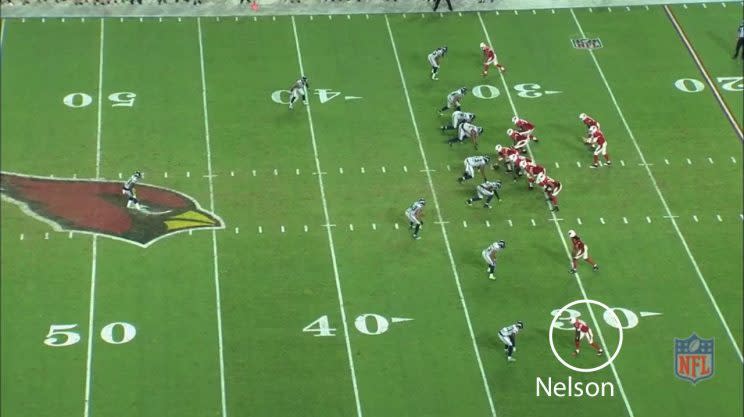
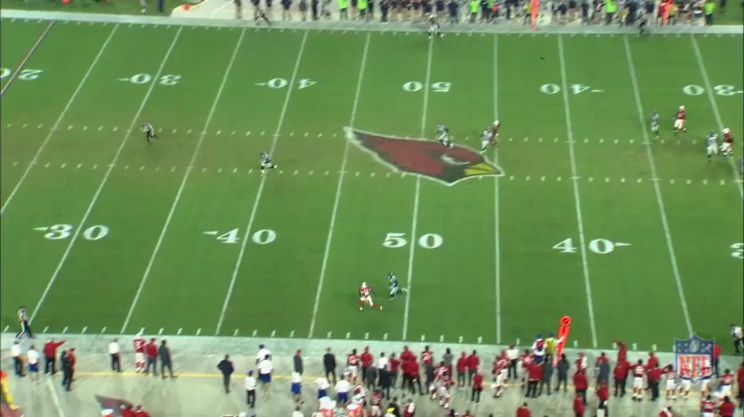
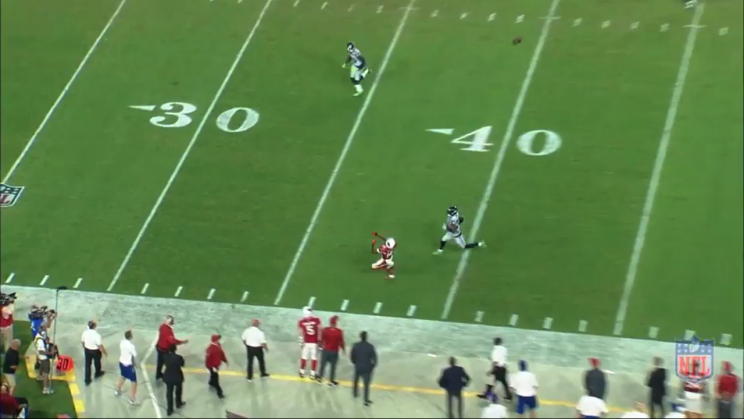
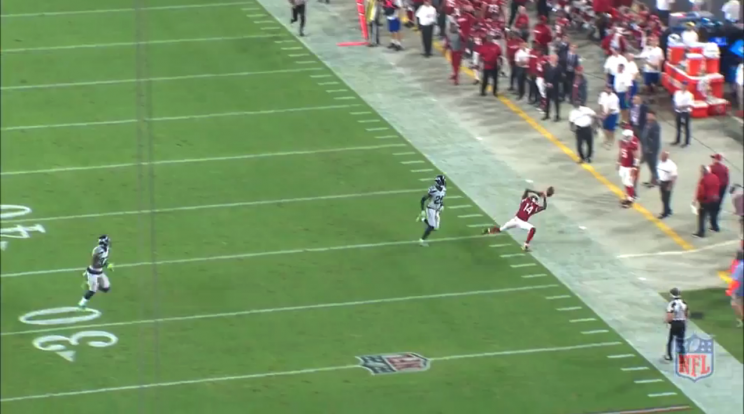
Finally after halftime we saw glimpses of the 2015 Cardinals offense, which produced many explosive plays. Late in the third quarter, with a seven-man protection concept, Palmer was comfortable in the pocket and made an accurate throw to Nelson on a deep dig for 24 yards. Running back David Johnson also did a great job picking up green-dog blitzing linebacker Bobby Wagner late in the down. This was the first play of the game that looked like last season’s Cardinals.
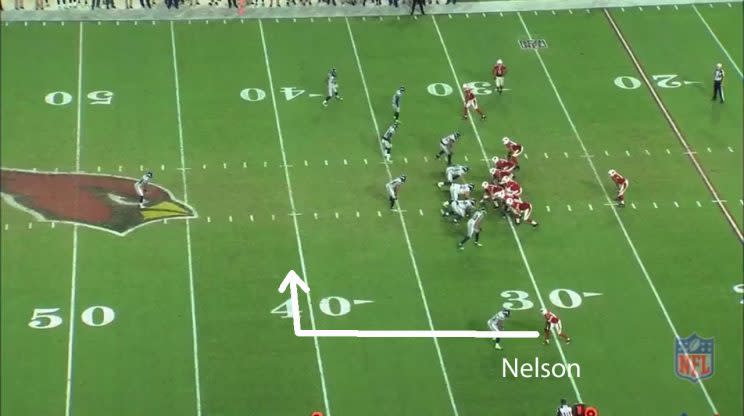
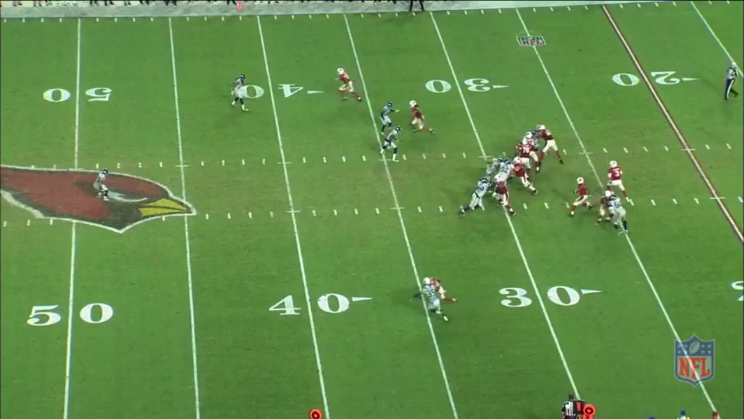
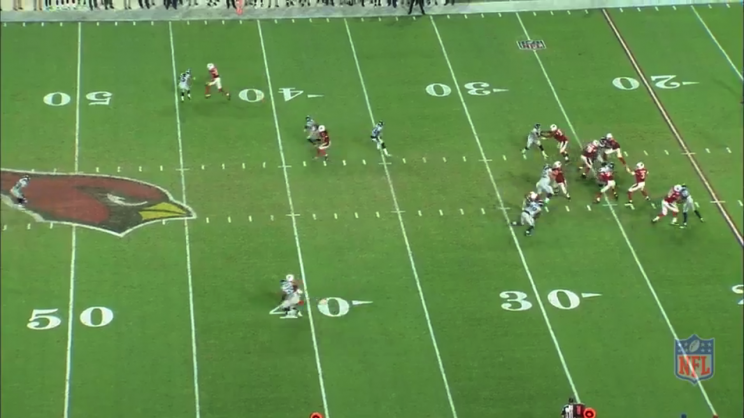
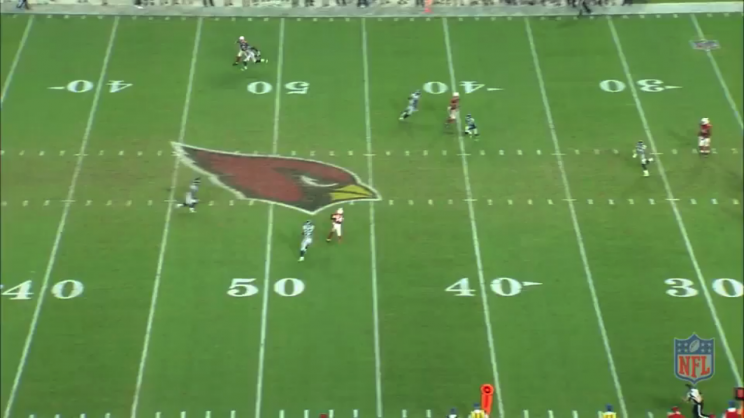
Palmer started to develop some rhythm as the game went on. In overtime, on third-and-7 Palmer initially looked to the three-receiver side to his left, then came back to the two-receiver side to his right and hit Nelson again. Nelson had a nice run after catch for 40 yards. It was excellent pocket composure by Palmer.
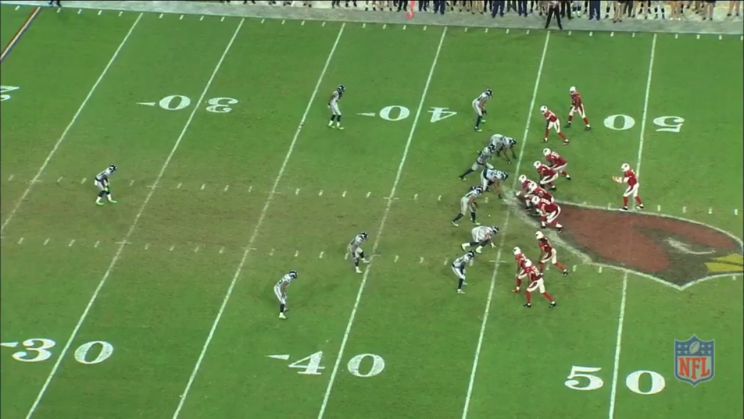
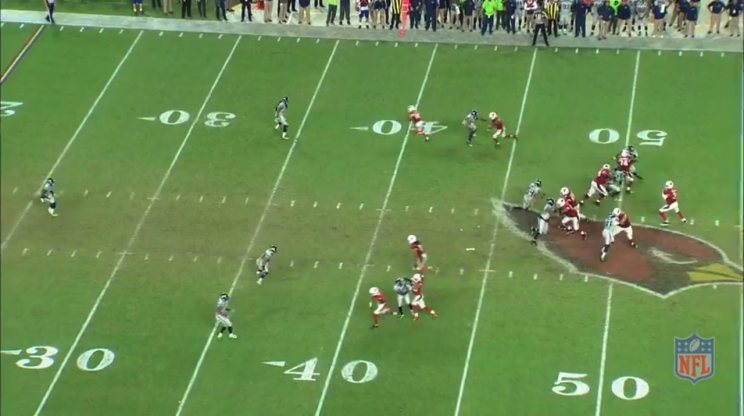
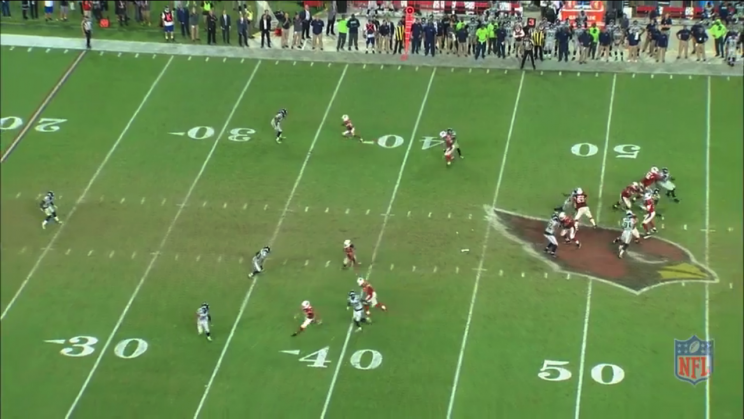
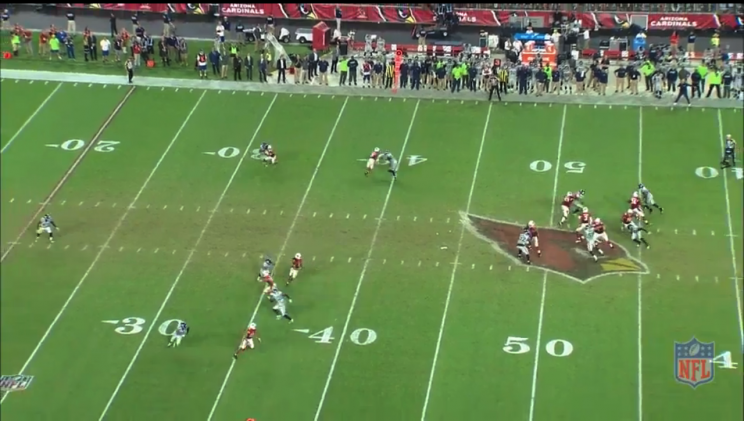
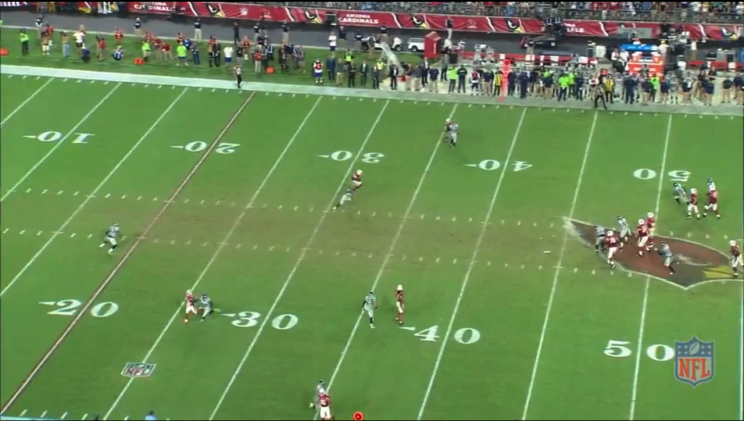
It will be interesting to see if Palmer can keep that positive momentum going this week at the Carolina Panthers.
Seahawks offense vs. Cardinals defense
The Seahawks are going to have problems with athletic fronts. Their offensive line isn’t athletic at all (though left tackle George Fant, a college basketball player who is expected to start this week, played some against the Cardinals and showed some athletic skills – though he’s a major work in progress).
The Cardinals didn’t even attack the Seahawks with many blitzes, even though Arizona is one of the most blitz-heavy defenses in the league. They didn’t have to blitz; they got plenty of pressure from their line. Wilson wasn’t comfortable at all – he looked skittish and frenetic in the pocket and wasn’t seeing things clearly.
On the first play of the game, the Seahawks had a two-man route concept with Jimmy Graham running a wheel route from the slot. This was a Cardinals blitz, and linebacker Kevin Minter came through clean. Calais Campbell beat left guard Mark Glowinski too. Wilson had to throw the ball away. There was no time for the play to develop. This set the tone for the entire game.
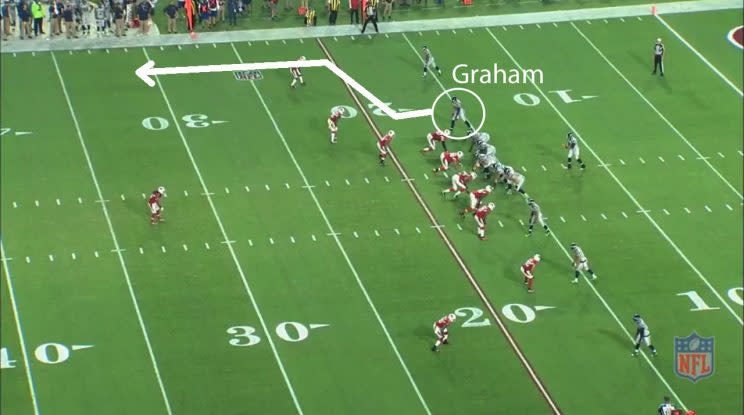
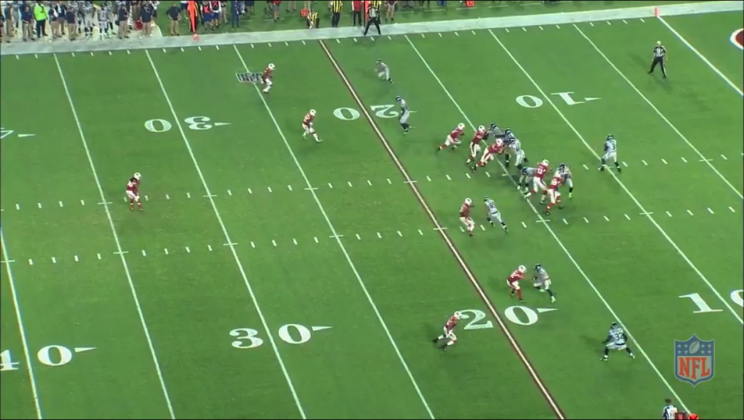
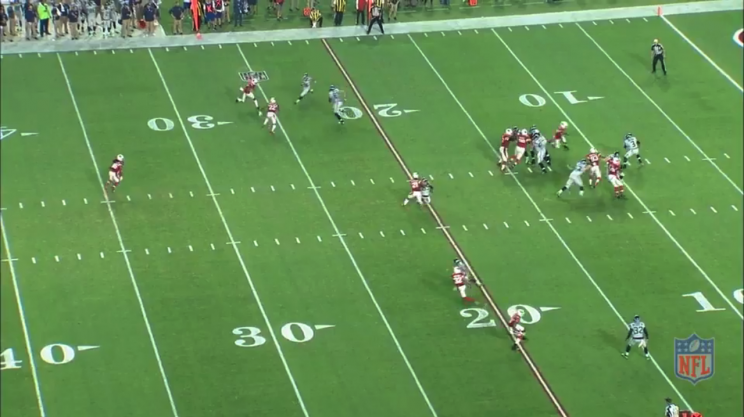
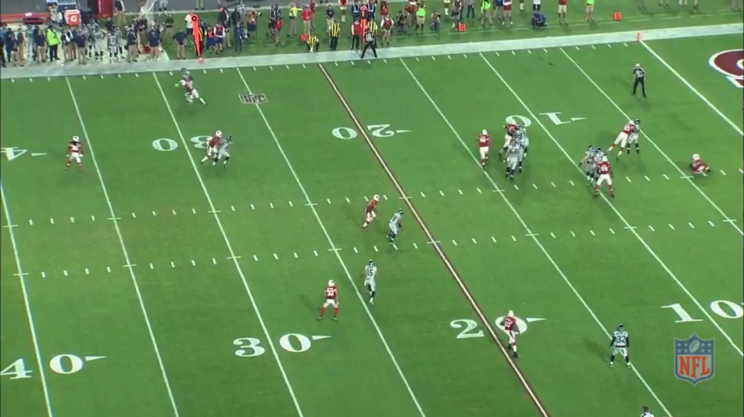
What also stood out is that the Seahawks are limited on their third-down formations, and your tendencies become more predictable that way. They don’t do a lot schematically, and with Wilson not being able to run much (probably due to injuries), they can’t count on that either. The Seahawks are near the bottom of the NFL with a 35.8 percent third-down conversion rate.
The Cardinals had a multiple game plan approach, with more zone coverages than we’re used to seeing from them. Their defensive line played very well, Campbell in particular. As for the Seahawks, there are issues with their offense, particularly protecting Wilson, that they’ll need to fix. They had a really rough game at Arizona.
One play summarizes Kaepernick’s struggles
Sometimes you can encapsulate a quarterback’s struggles with one play. This one from San Francisco 49ers quarterback Colin Kaepernick last week says a lot.
In the fourth quarter, one first-and-goal, Kaepernick dropped back and had no pressure at all. He also had tight end Garrett Celek wide open on a sit route right in front of him at the 1-yard line. Kaepernick didn’t process it at all, never set his feet and left the pocket. He threw in the flat instead. He missed a touchdown.
When we talk about Kaepernick not processing things from the pocket, this is exactly what we’re talking about.
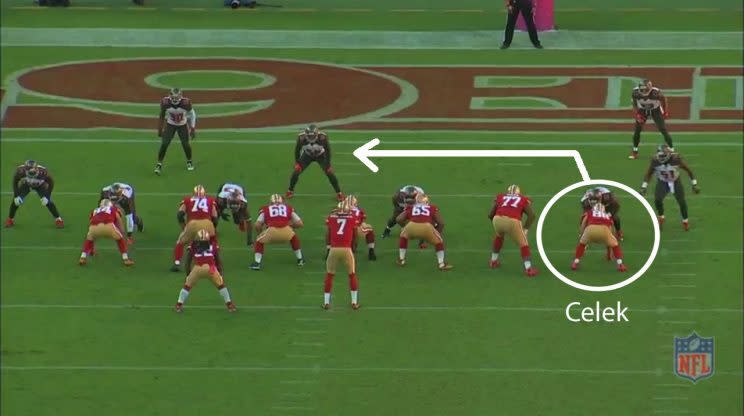
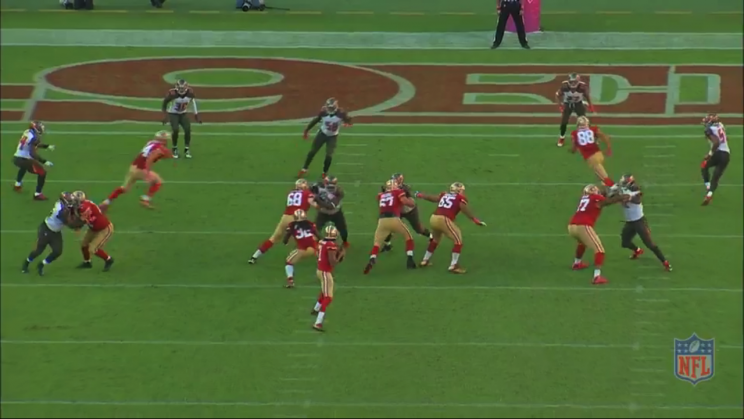
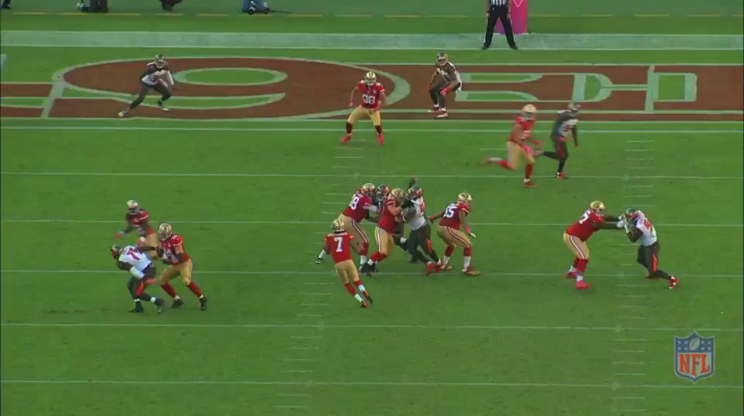
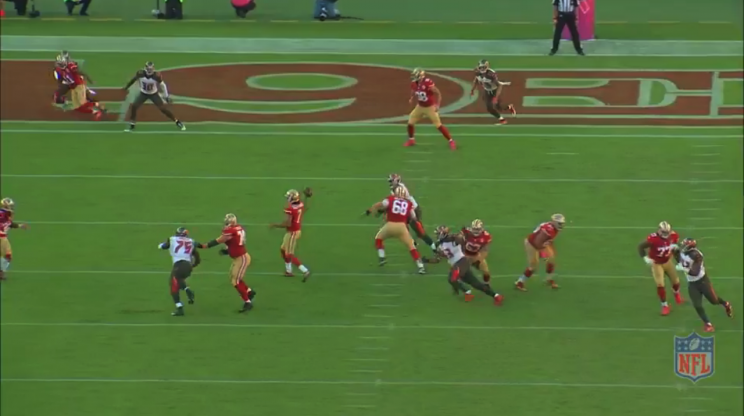
It’s hard to develop any rhythm or continuity in your offense with this kind of quarterback play.
One play summarizes Osweiler’s struggles
Like Kaepernick, I saw a play on Monday night from Houston Texans quarterback Brock Osweiler that was telling.
On the third play of the game, a third-and-5, it was a defined read play call. DeAndre Hopkins trailed tight end Ryan Griffin on a two-man drive route concept, with the throw going to Hopkins. In response to Hopkins motioning across the formation, the Denver Broncos changed the defense from “Cover 1” (man) to a two-man concept with safety T.J. Ward and cornerback Aqib Talib bracketing Hopkins. Hopkins released inside and Ward jumped the route. Osweiler turned it loose long after Ward made his break.
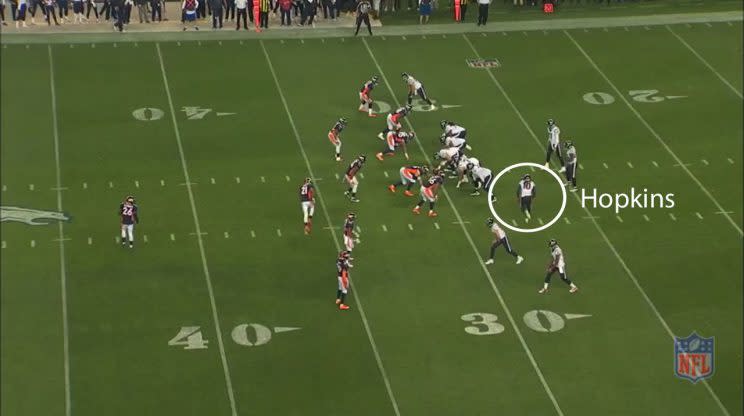
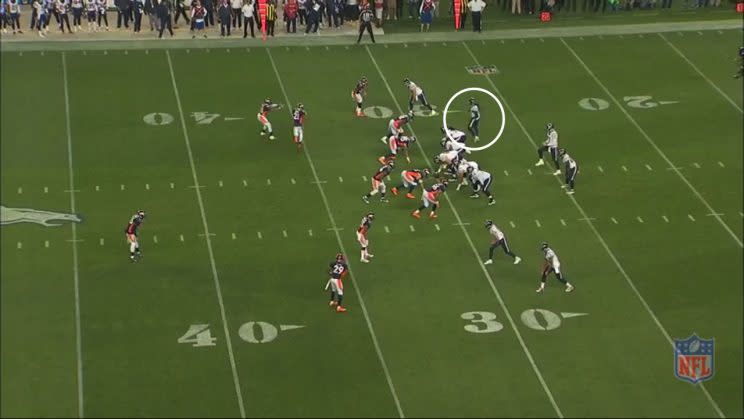
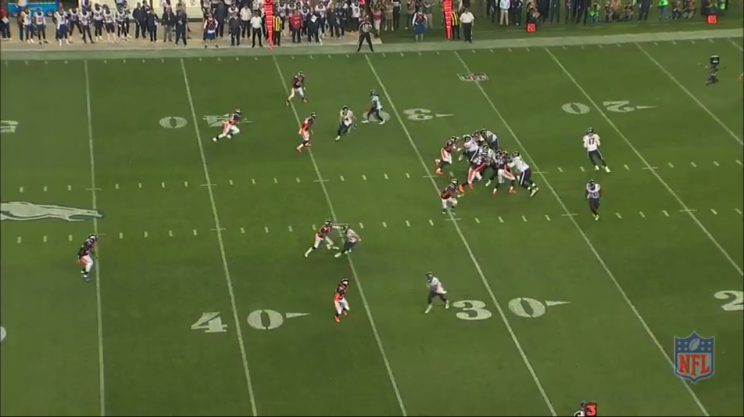
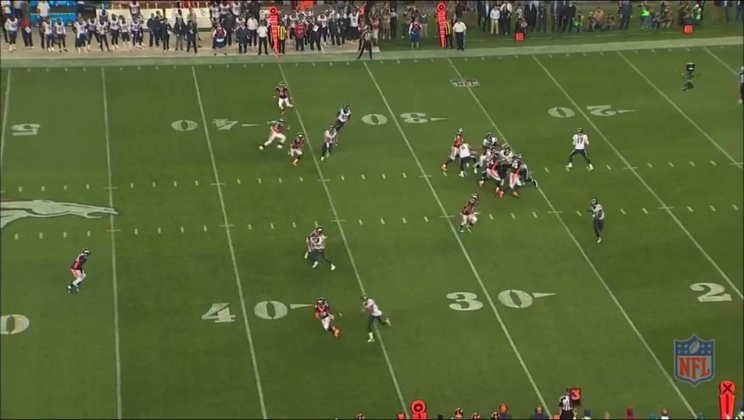
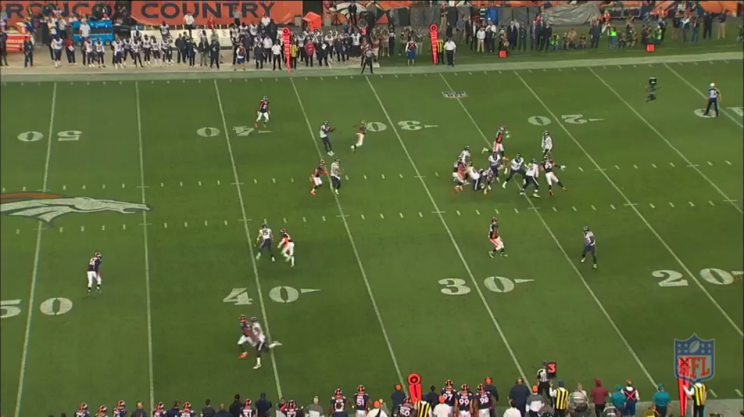
This play is a great example of a quarterback not seeing things, just executing the play call without any field vision.
– – – – – – –
NFL analyst and NFL Films senior producer Greg Cosell watches as much NFL game film as anyone. Throughout the season, Cosell will join Shutdown Corner to share his observations on the teams, schemes and personnel from around the league.



